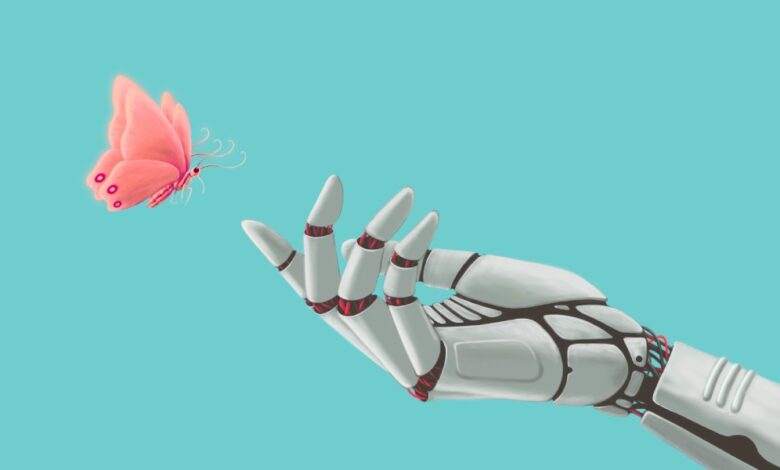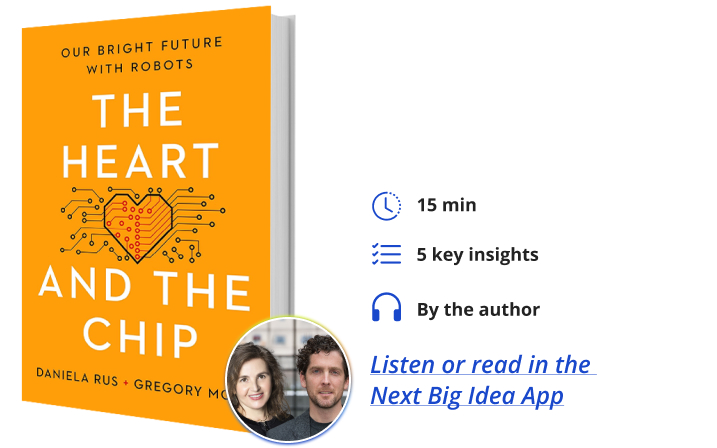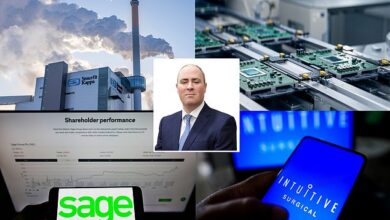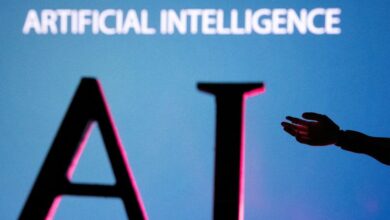Why Robots Are an Asset–Not a Threat–to Human Happiness

Daniela Rus is a pioneering roboticist and a professor of electrical engineering and computer science at MIT. She is the director of the Computer Science and Artificial Intelligence Laboratory. She is also a member of the National Academy of Engineering, the American Academy of Arts and Sciences, and a MacArthur Fellow.
Gregory Mone is a bestselling author and former editor at Popular Science.
Below, co-authors Daniela and Gregory share five key insights from their new book, The Heart and the Chip: Our Bright Future with Robots. Listen to the audio version—read by Daniela—in the Next Big Idea App.

1. Contrary to popular movies, robots and people are allies, not adversaries.
Robots are tools. They aren’t inherently good or bad. Neither is a hammer. Think of this new generation of extraordinary machines as very advanced hammers; it is what we choose to do with these tools that defines their impact and value. We can choose to do incredible things. We can work alongside robots to engineer better medicines, make transportation safer and more efficient, assign them to tasks that are too dangerous or difficult for humans alone, translate conversations instantly into other languages, and even give ourselves superpowers like my favorite superhero, Iron Man.
When people and machines work together, we meld cold computation and pattern recognition with the warmth of human insight and the depth of human knowledge. We merge the heart and the chip, and allow ourselves to achieve so much more than what people or robots alone can do.
Today, millions of robots are operating in factories, doing everything from assembling computers to packing goods to monitoring air quality. Robots help people with physical and cognitive work, helping us to transcend our human limitations with a suite of capabilities that extend our reach, amplify our strength, and refine our precision. By taking on physical tasks, they not only save us invaluable time but also enhance our ability to perform work with unparalleled accuracy.
Robots can magnify our vision, allowing us to see with clarity beyond the natural capacity of the human eye. They empower us to defy gravity and enable activities in environments once deemed inaccessible. In their most advanced forms, robots imbue us with attributes that border on the magical—granting us the ability to navigate and manipulate our world in ways that once existed only in the realm of fantasy. Through these remarkable machines, we are not just augmenting our physical capabilities; we are redefining the very boundaries of human potential.
2. Robots are not all-powerful; there are fundamental limitations to intelligent machines defined by their bodies and brains.
Most people think of metallic humanoids when they hear the word robot, but intelligent machines take many forms, and they’re made from many different materials. In my lab at MIT, we’ve created soft robots, microscopic robots, and shapeshifters. Researchers are designing robots out of biological cells. We can turn almost anything in the built and natural environments into a robot, from robotic honeybees to robotic furniture.
“There are limits to what these machines can do and these limits are defined by the body and the brain of the robot.”
Years ago, when the bright daylight made it almost impossible for my students to see their computer screens, we designed and fabricated a robotic window shade that moved with the sun. There are limits to what these machines can do and these limits are defined by the body and the brain of the robot. A robot is limited in what it can do by its body—the physical part of the machine that has a certain shape and includes sensors, actuators, computers, data storage, and power sources).
The robot is also limited by what its brain can do—the software part consisting of low-level controllers, algorithms, and AI systems that can guide its actions. A self-driving car cannot vacuum your carpet, and a robotic vacuum will not beat you in chess.
3. We are making significant strides toward a robot-enhanced future—the future is happening now.
The vision of pervasive robots seamlessly assisting with physical tasks across all aspects of daily life remains a work in progress due to numerous technical limitations. But we are now in an era where specialized robotic applications are making significant strides.
Mine is a vision of a world in which bespoke machines assist people with both basic and complex cognitive and physical tasks. This future is starting to mature inside my lab and in the labs of my friends at other universities and institutions and inside many forward-thinking companies.
Robots have enabled us to probe the mysterious depths of the dark ocean. They’ve helped us explore the surface of Mars, sifting through the soil on a planet 34 million miles away. Intelligent machines are mowing our lawns, working as personal trainers, plowing fields, and milking cows. I’m working on sports-related enhancements, including a wearable robotic shirt embedded with artificial muscles to help athletes train. Personally, I’d like a better tennis forehand, but we could build a robotic jacket that could help your golf swing or badminton game.
“Mine is a vision of a world in which bespoke machines assist people with both basic and complex cognitive and physical tasks.”
These specialized uses showcase the potential of robots in targeted environments and tasks where they can operate effectively within current technological constraints. In healthcare, for example, surgical robots are enhancing the precision of operations, allowing for minimally invasive procedures with quicker recovery times. Industrial robots continue to revolutionize manufacturing floors, executing tasks with speed and accuracy unmatched by human hands, from assembly lines to intricate component fabrication. Logistics and delivery services have begun to employ robots for sorting packages and, in some cities, delivering goods directly to customers’ doorsteps, demonstrating the feasibility of robots in urban environments. In environmental conservation, robots are being used for tasks like monitoring wildlife and collecting data in hard-to-reach areas.
4. There are many possible futures with AI and intelligent machines.
Alongside the optimistic visions, we must also consider scenarios where the integration of machines into society introduces complex technical, social, and ethical dilemmas and disruptions. I can imagine three different trajectories.
The first scenario would see us following our current path, building better robot bodies and increasingly large AI and machine learning models. The intelligent machines that rely on these models will continue to become more and more capable. They will very likely amaze and astound us all, and some in the computer science field argue that this is the best way forward. They argue that everything is data. We don’t need to redesign our AI models. We just need to feed more data into models to generate optimal results.
But there is a danger to this vein of thinking. We do not truly understand how the large AI models work. They are black boxes. So if we follow this route, we won’t be able to truly explain why our learning models do what they do, nor what has gone wrong if they make a dangerous decision. Furthermore, we risk producing a generation of highly trained people who cannot actually explain their work, akin to skilled pilots flying sophisticated aircraft by instruments alone, without truly understanding the principles of flight or how to navigate in the absence of their instruments. My contemporaries who argue that everything is data could be right, and this could all work out in the end, but what if they’re wrong?
In a second possible scenario, these optimistic projections will prove flawed in practice, and we will see widespread deployment of technologies that we don’t understand and have no idea how to fix when broken. This is my nightmare. Not the Hollywood vision of suddenly sentient machines deciding to extinguish us. We will end up with a massive, complex system we depend on but can’t comprehend, along with mountains of discarded technologies and electronic waste.
“This techno-optimism isn’t very popular right now, but with enough forethought and planning, this future is achievable.”
The third scenario centers on a vision of intelligent machines as smarter tools for people. This is the future in which robots and AI solutions are certified, trustworthy, explainable, safety-critical systems with well-understood capabilities. These robots and AI solutions will assist us with all kinds of cognitive and physical tasks, lifting humanity to a higher standard of living, even giving us superpowers. This techno-optimism isn’t very popular right now, but with enough forethought and planning, this future is achievable. It won’t be easy. This transition will demand careful consideration of ethical, privacy, and employment implications, ensuring that the benefits of intelligent machines are equitably distributed.
5. We must harness intelligent machines to address humanity’s grand challenges.
The conversations around the impact of robots and AI on a grand or global scale tend to focus on doomsday scenarios. These are important and must be accounted for; we must do everything possible to steer the future in a positive direction. Yet, we also need to think more about how we can use robots and AI to solve some of the largest problems we face as a species.
These intelligent systems, powered by advances in artificial intelligence and robotics, offer unprecedented capabilities to analyze vast datasets, identify patterns, and execute tasks with a precision and efficiency that far surpass human limitations. From combating climate change by optimizing energy consumption and reducing emissions to revolutionizing healthcare through personalized medicine and robotic surgery, intelligent machines are at the forefront of creating sustainable, impactful solutions.
In agriculture, AI-driven technologies can predict crop yields, monitor soil health, and manage resources with minimal waste, contributing to global food security. In disaster response, drones and autonomous vehicles can navigate hazardous environments to deliver aid and locate survivors faster than ever before. Additionally, intelligent machines are pivotal in advancing scientific research, automating tedious experiments, and simulating complex theoretical models, thus accelerating the pace of discovery.
By effectively merging the heart and the chip, and guiding the development and application of these powerful tools with wisdom, foresight, and a commitment to the greater good, we will solve the largest problems facing our people and our planet.
To listen to the audio version read by co-author Daniela Rus, download the Next Big Idea App today:




